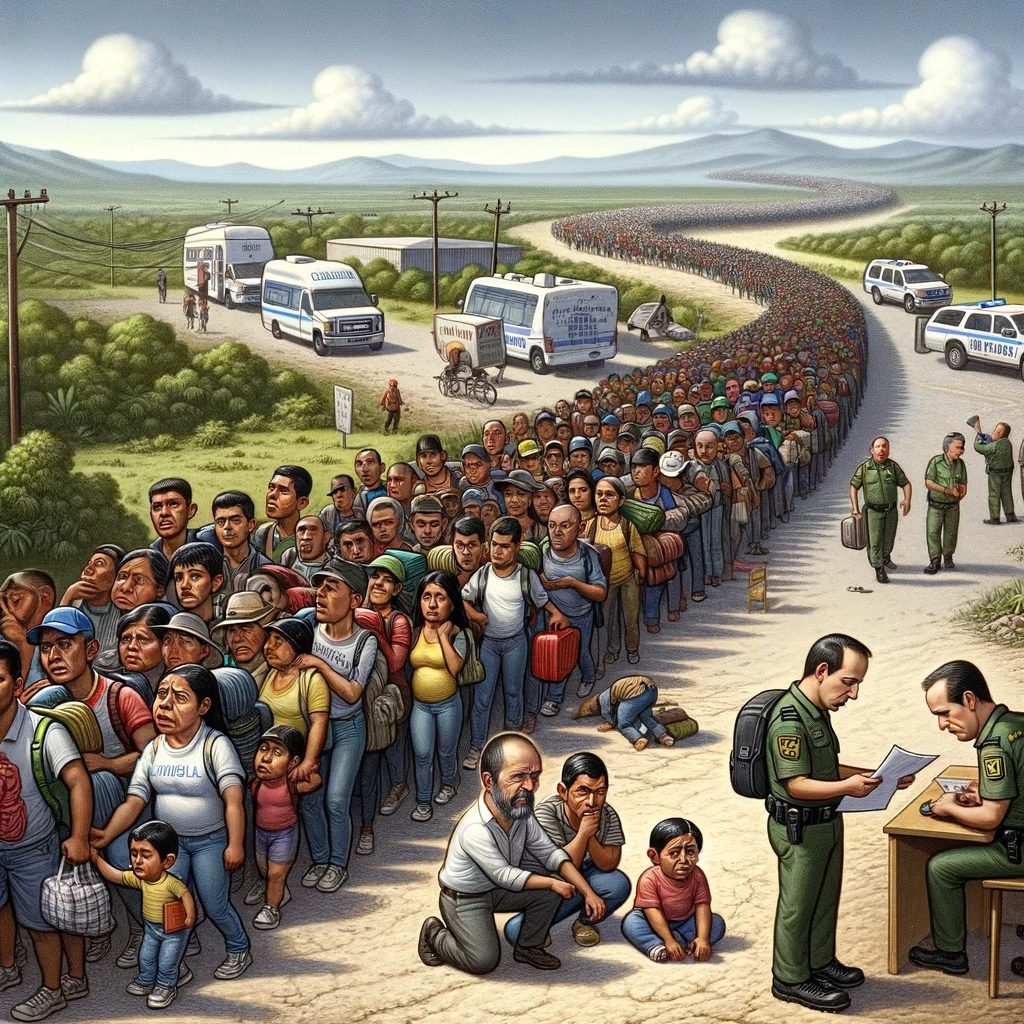Dissolution of Honduran Migrant Caravan in Guatemala
- Summary Point 1: A caravan of about 500 migrants from Honduras, aiming for the U.S., dissolved after entering Guatemala.
- Summary Point 2: The migrants were stopped by Guatemalan migration officials who processed them, prioritizing minors.
- Summary Point 3: Those with proper documents continued through, while others without necessary documentation returned to Honduras.
In-depth Analysis:
In a scene reminiscent of a human river seeking its source, a caravan of approximately 500 migrants, originating from Honduras, met its end not with a bang, but a whimper, as it dissolved upon crossing into Guatemala. This caravan, symbolic of the enduring struggle for a better life, embarked on its journey with the United States as its North Star. However, like a play where the curtain falls mid-scene, their journey was abruptly halted.
Guatemalan migration officials, like sentinels at the gates of a fortress, processed the caravan. In this procedural dance, they prioritized the vulnerable – the minors, who represent the face of innocence in this complex narrative of migration. It was a scene marked not by violence, but by the quiet efficiency of bureaucracy.
For those armed with the shield of proper documents, the path remained open, a testament to the power of legal paperwork in navigating the labyrinth of international borders. These individuals, with papers as their talisman, continued their journey, possibly with dreams intact. In contrast, those lacking these crucial documents found their dreams dashed, as they were compelled to retrace their steps back to Honduras.
This event marks yet another chapter in the ongoing saga of migration in Central America, a narrative punctuated by hope, despair, and the relentless pursuit of a better future. The dissolution of the caravan is not just the end of a journey, but a metaphor for the fragile nature of the migrant’s quest – a quest often thwarted by the invisible yet impenetrable walls of bureaucracy and international law.
The caravan’s fate also underscores the shift in migration patterns post-pandemic. While large caravans were more common pre-pandemic, resulting in significant numbers reaching the U.S. southern border, increased pressures from the U.S. on Mexico and Central American governments have led to stricter controls. As a result, the journey north has become more fragmented, with migrants often resorting to smaller groups, clandestine routes, and the shadowy world of smuggling networks.
Conclusion:
The unraveling of the Honduran migrant caravan in Guatemala is more than a mere logistical update; it’s a human story woven into the broader tapestry of migration in the Americas. It reflects the complex interplay of hope, policy, and reality that characterizes the migrant experience. This episode serves as a poignant reminder of the challenges faced by those who embark on such perilous journeys, driven by the universal pursuit of a better life. It also highlights the role of international borders and policies in shaping the fate of these journeys, underscoring the delicate balance between national sovereignty and humanitarian considerations in the ever-evolving narrative of human migration.
https://news.yahoo.com/caravan-migrants-honduras-headed-north-224334017.html










